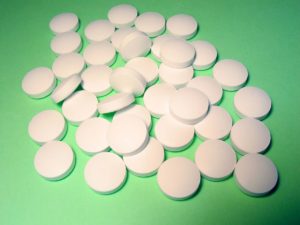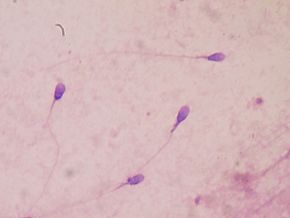 This is an issue that a lot of women I've known over the years have wondered about: if a woman gets pregnant while on birth control pills (oral contraceptives) - and many women do - does it mean higher rates of birth defects? This study says NO to higher rates of major birth defects which is very reassuring, but it doesn't answer the issue of more subtle effects (e.g., behavioral effects) from the hormones in the contraceptives. From Medical Xpress:
This is an issue that a lot of women I've known over the years have wondered about: if a woman gets pregnant while on birth control pills (oral contraceptives) - and many women do - does it mean higher rates of birth defects? This study says NO to higher rates of major birth defects which is very reassuring, but it doesn't answer the issue of more subtle effects (e.g., behavioral effects) from the hormones in the contraceptives. From Medical Xpress:
Oral contraceptive use not associated with increased birth defects risk
Oral contraceptives taken just before or during pregnancy do not increase the risk of birth defects, according to a new study by researchers from Harvard T.H. Chan School of Public Health and the Statens Serum Institut in Denmark. They found that the prevalence of major birth defects was consistent (about 25 per 1,000 live births) across all pregnant women in the study population regardless of contraceptive use.
Even though oral contraceptives are more than 99% effective with perfect use, almost 10% of women become pregnant within their first year of use. Many more women will stop using oral contraceptives when planning a pregnancy and conceive within a few months. Little is known about the potential health effects to children from in utero exposure to the hormones in oral contraceptives.
....Charlton and colleagues were able to tap into a wealth of data collected from multiple Danish health registries between 1997 and 2011 and linked by the unique personal identification number assigned to all Denmark residents. The researchers looked at 880,694 live-born infants, and the health of these children at one-year follow-up. Oral contraceptive use was estimated based on the date of the mother's most recently filled prescription. Among the women in the study population, a fifth had never used oral contraceptives before becoming pregnant, and more than two-thirds had stopped using oral contraceptives at least three months before becoming pregnant. Eight percent had discontinued use within three months of becoming pregnant, and 1%, or well over 10,000 women, had used oral contraceptives after becoming pregnant.
The prevalence of birth defects was consistent across each category of oral contraceptive use, and remained so when the researchers added in pregnancies that ended as stillbirths or induced abortions.

 More and more negative news about phthalates: men with greater exposure to DEHP (a phthalate) have lower
More and more negative news about phthalates: men with greater exposure to DEHP (a phthalate) have lower  A large study found that using antidepressants during the second or third trimester of pregnancy increases the risk that the child will have autism by 87%, especially if the mother takes selective serotonin reuptake inhibitors (SSRIs). A drawback was that the study looked at associations rather than actual cause (which would have meant randomly assigning women to either treatment or no treatment - which is unethical). From Medical Xpress:
A large study found that using antidepressants during the second or third trimester of pregnancy increases the risk that the child will have autism by 87%, especially if the mother takes selective serotonin reuptake inhibitors (SSRIs). A drawback was that the study looked at associations rather than actual cause (which would have meant randomly assigning women to either treatment or no treatment - which is unethical). From Medical Xpress: Recent research looked at environmental causes of male infertility, specifically endocrine-disrupting chemicals.
Recent research looked at environmental causes of male infertility, specifically endocrine-disrupting chemicals. An interesting Canadian study that followed young children for 3 years found that young infants may be more likely to develop allergic
An interesting Canadian study that followed young children for 3 years found that young infants may be more likely to develop allergic  Children exposed to insecticides (pesticides) at home have an increased risk of developing leukemia or lymphoma, a new review finds.The analysis, of 16 studies done since the 1990s, found that children exposed to indoor insecticides had an elevated risk of developing the blood cancers. There was also a weaker link between exposure to weed killers and the risk of leukemia.
Children exposed to insecticides (pesticides) at home have an increased risk of developing leukemia or lymphoma, a new review finds.The analysis, of 16 studies done since the 1990s, found that children exposed to indoor insecticides had an elevated risk of developing the blood cancers. There was also a weaker link between exposure to weed killers and the risk of leukemia. Disturbing results from a study looking at data from over 1 million women enrolled in Medicaid before pregnancy from 2000 to 2007. More than four of five (82.5%) pregnant women were prescribed at least one medication, and 42.0% were prescribed a drug that is potentially harmful to the developing fetus.From Medscape:
Disturbing results from a study looking at data from over 1 million women enrolled in Medicaid before pregnancy from 2000 to 2007. More than four of five (82.5%) pregnant women were prescribed at least one medication, and 42.0% were prescribed a drug that is potentially harmful to the developing fetus.From Medscape: Several recent studies have found that constant exposure to high levels of air pollution has negative effects on the brain. The
Several recent studies have found that constant exposure to high levels of air pollution has negative effects on the brain. The